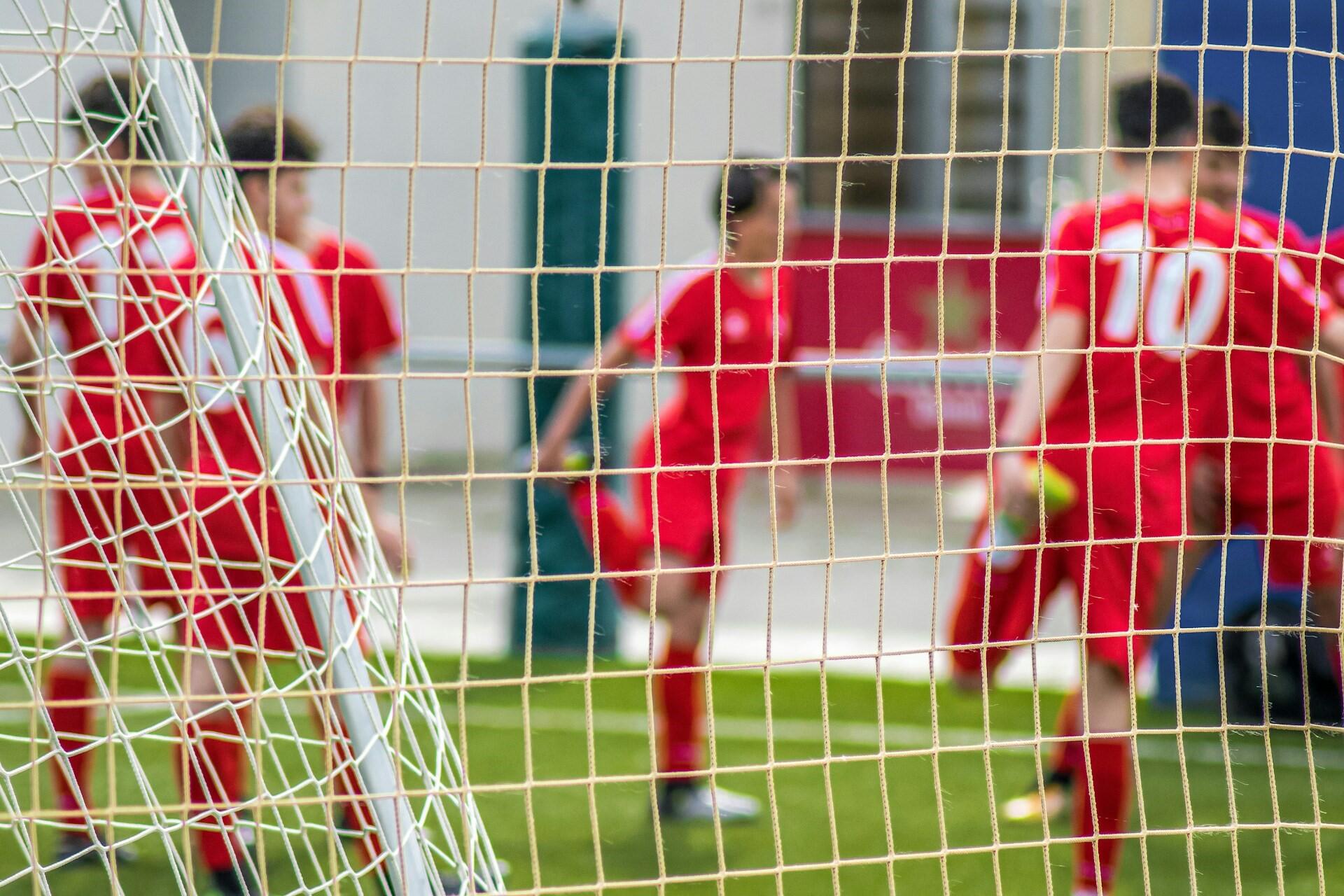For a long time, Australia's football (soccer) landscape has been a single tier. The A-League Men is the only league at the top of a "pyramid" where it's the only level. However, plans for a national second division, to be known as the Australian Championship, are helping the push for promotion and relegation gain traction. Here, we'll look at this new league and whether or not it could make promotion and relegation a reality for A-League second-division teams.

What Is the National Second Division?
The National Second Division, which is officially branded the Australian Championship, is Australia's nationwide second-tier men's football competition. It was launched by Football Australia in February 2025 and is scheduled to start in October 2025, running until early December each year. The league is designed to sit directly below the A-League Men, creating a national second tier that bridges the gap between the A-League and the various state-based National Premier Leagues (NPL).
Australia's new second-tier league is officially called the Australian Championship. It features 16 clubs, runs from October to December, and is designed to bridge the gap between the A-League and state-based leagues.
Key features include:

Currently, there is no direct promotion to the A-League, and the aim is for the competition to complement the top flight and strengthen the overall level of football in Australia, without offering teams a means to reach the A-League from the Australian Championship.
Who Are the A-League Second Division Teams?
While this is a "national" competition, you'll see by looking at the teams that the foundation clubs for 2025 are all in and around either Melbourne or Sydney.
APIA Leichhardt FC
APIA Leichhardt FC, or APIA, is a semi-professional club that's been going since 1954. Founded by Italian-Australians (APIA stands for Associazione Poli-sportiva Italo Australiana), it was a fairly successful club in the 1960s and 1970s. It's based in Sydney and plays in either the 7,000-seater Lambert Park or 20,000-seater Leichhardt Oval.
Avondale FC
Avondale FC is based in Melbourne. Founded in 1984, the club plays at the 2,500-seater Avenger Park.
Marconi Stallions
Marconi Stallions was founded in 1958. Based in Sydney, they play in the 9,000-seater Marconi Stadium.
Preston Lions
The Preston Lions are a Melbourne club that plays at the B.T. Connor Reserve 9,000-seater stadium. Founded in 1947, they've spent time in the National Soccer League, Victorian Premier League, and now, the National Second Division.
South Melbourne
South Melbourne is a Melbourne-based football club. Founded in 1959, the club has undergone several name changes. It has been a member of the National Soccer League and the National Premier Leagues Victoria. It will officially play in the National Second Division in October 2025. South Melbourne plays at the 12,000-seater Lakeside Stadium.

Sydney Olympic
Sydney Olympic was founded as the Pan-Hellenic Soccer Club in 1957 by Greek immigrants and became a founding member of the Phillips Soccer League (later the National Soccer League) in 1977, changing its name to the Sydney Olympic Football Club as a result.
Sydney United 58
No prizes for guessing which year Sydney United 58 were founded or where they're from. This semi-professional club plays in the National Premier League NSW. Still, it will take to the new National Second Division in October 2025. The team currently plays at the Sydney United Sports Centre, a 12,000-seater stadium in Edensor Park, Sydney.
Wollongong Wolves Football Club
Last but not least, we have Wollongong Wolves Football Club. Founded in 1980, this club is currently competing in the National Premier Leagues NSW, and will participate in the inaugural year of the Australian Championship.
Other Clubs
The inaugural clubs aren't the only ones interested in the Australian Championship. There's been interest from several other clubs, including Adelaide City FC, Caroline Springs George Cross FC, Gold Coast United FC, Gungahlin United FC, South Hobart FC, and Sunshine Coast Fire, which have all passed the technical elements for inclusion. Beyond them, there are a few more teams that haven't completed the formal request process but may still look to join the league in the future.
How Will the National Second Tier Work?
The Australian Championship is set to kick off in October 2025, featuring 16 teams. There are eight Foundation Clubs and eight Member Federation NPL Clubs selected from the National Premier Leagues (NPL). The idea is to bridge the state-based competitions and the Isuzu UTE A-League Men's pathway. The tournament will be played as a group stage with four groups of four teams in a round-robin format (a home and away match for each fixture).
Step 1
February 2025
League announced by Football Australia
Step 2
October 2025
Inaugural season kicks off
Step 3
December 2025
First champions crowned
The top two in each group will qualify for the elimination Finals Series, a bit like the A-League's Final Series. The inaugural champion of the Australian Championship will be crowned in early December following the Final Series.


Why Australia Needs a National Second Division
The idea behind a National Second Division is to elevate and boost the overall standing of football in Australia. By having a high-quality football competition directly beneath the A-League, there are new opportunities for increased interest and revenue. Essentially, the A-League is independent, and it's common for A-League teams to scout within their ranks rather than the NPL and other leagues. The National Second Division could be a springboard for talent.
A bigger talent pool will also help boost the A-League and Australian football, which benefits the national team, the Socceroos, as well. Most importantly, many will hope that this closer link between the A-League and the National Second Division will create future opportunities for a league-wide relegation and promotion system. However, given that the Australian Championship is new and the A-League has a much longer history, this isn't something that they're looking to implement immediately.
A national second division promotes grassroots growth, widens the talent pipeline, and builds pressure for a promotion-relegation system, which is essential for a strong, competitive football pyramid.
Does the A-League Have Relegation?
At the moment, there's no relegation from the A-League. It has operated as a closed competition since 2005, with clubs holding long-term licences rather than promotion-earned places. The structure was designed to ensure investors would have certainty, knowing that even fledgling clubs would be safe in the league while the league was established. However, the creation of a thoroughly professional National Second Division is seen as a key first step towards a promotion and relegation model.
Football Australia has mentioned that relegation and promotion, which is more akin to the elite football pyramids in other countries, is a long-term goal. However, this won't happen until the second tier is financially stable and can meet A-League standards for stadiums, broadcast, and player wages. In the short term, there are no concrete plans for relegation and promotion between the A-League and the Australian Championship, but this could change based on how the new National Second Division evolves.
What A-League Relegation Could Look Like
If A-League relegation is introduced (and a subsequent promotion from the Australian Championship), would likely require a phased rollout. Discussions have primarily centred around a two-up, two-down system. In this case, the top team in the Australian Championship would gain automatic promotion to the A-League, and the last-placed team would be automatically relegated. Then, the second-placed Australian Championship would play against the second-last A-League team for the second slot in the A-League.
in the Australian Championship.
Other elements likely to be included in the promotion and relegation system are:
- Licensing and Facilities: Any promoted side must meet A-League stadium, academy, and financial criteria before elevation.
- Parachute Payments: Relegated A-League clubs would receive a one-season stipend to cushion the revenue drop and remain competitive in the second tier.
- Gradual Expansion: The top flight may grow to 16 clubs before promotion-relegation begins, ensuring the A-League calendar accommodates extra fixtures without overloading players.
- Protected Marquee Slots: Relegated clubs could retain one marquee exemption to maintain star power and gate receipts.

Looking Ahead: The Future of the Football Pyramid in Australia
With the National Second Division not yet underway, it's difficult to predict what the football pyramid in Australia will look like, as there are too many unanswered questions. Firstly, any chance of promotion and relegation depends on the success of the Australian Championship. Only when the Australian Championship is established as a quality and sustainable league will there really be any chance of the A-League even considering promotion and relegation. Before anything can happen, these milestones will likely need to be hit.
Sustainable Second-Tier Clubs
The Australian Championship must prove it can run full-time squads, attract sponsors, and draw meaningful attendances across every state. A robust commercial base is the prerequisite for upward and downward movement.
- Expanded A-League: Football Australia has hinted the top flight could grow to 16 teams, giving breathing room for one or two relegation places without shrinking the national footprint.
- Aligned Calendars and Broadcast Deals: Synchronising season dates, media rights, and marketing across both tiers will be critical to maximise exposure and revenue, especially if finals and relegation playoffs are introduced.
- Youth Development Pathways: A clear ladder from local NPL sides to the national second tier and, ultimately, the A-League will encourage clubs to invest in academies and home-grown talent, strengthening Australia’s player pipeline and creating future top A-League players.
- Women’s Integration: As the Liberty A-League Women professionalises, a parallel second tier for women’s clubs could emerge, mirroring the men’s pyramid and cementing equal opportunity across the sport.
Either way, it makes the National Second Division worth following, especially for fans of the clubs involved, as the success of the league could ultimately be their pathway to the A-League.















